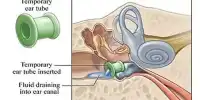Chemotherapy-induced hair loss is one of the most well-known side effects in medicine, and for many patients, it is an unwelcome public statement of their diagnosis and treatment. Luminate Medical may have a remedy in the form of a medical wearable that inhibits the chemical mixture from tainting hair follicles, halting the worst of the hair loss and possibly putting an end to this extremely noticeable condition.
“We were absolutely amazed at how much hair loss dominated the conversation,” said Luminate CEO Aaron Hannon and co-founder Bárbara Oliveira when they were asking patients and doctors about areas of cancer therapy where they could perhaps innovate.
“So we’ve just been laser-focused on making that something that doesn’t exist anymore from then on.” When a patient receives chemotherapy, the cancer-fighting chemicals circulate throughout their body, wherever the blood flows. This has a number of negative effects, including weakness and nausea, and hair loss happens over time as the drugs impact the follicles. The answer developed by Luminate in collaboration with the National University of Ireland Galway is to prevent blood from ever reaching those cells.
This is accomplished by the use of a motorized compression garment for the head. If that seems a little scary, don’t worry: the pressure is achieved using only soft materials; Hannon claims it isn’t painful, and the pressure is properly monitored. There’s also no danger of those cells being damaged due to a lack of blood supply. “Compression therapy has received a lot of research,” he stated. “There has been a lot of research on how long these medicines can be used without harming the cells. Making it both comfortable and functional necessitates a certain bit of mechanical engineering.”
During and after the chemo session, the patient wears the cap. By confining blood flow to the scalp’s epidermis exclusively, the medications can travel unhindered to the tumor or cancer location while avoiding harm to the hair follicles.
While comprehensive human trials will take time and approval to set up, preliminary tests of the headset’s blood flow-blocking effects on healthy patients demonstrated that it worked exactly as planned on individuals.
Hannon stated, “We’re particularly excited about the success of this therapy because it works with a variety of hair types.” That’s a valid point because a technology that only functioned with short hair, straight hair, or some other group of hairstyles would exclude a large number of people. In terms of competition, despite the fact that certain modern treatments cool the scalp instead of squeezing it, Hannon remarked that wigs are by far the most expensive item. With an average of a thousand dollars per patient who chooses a wig, there’s plenty of room for a gadget in that price range.















